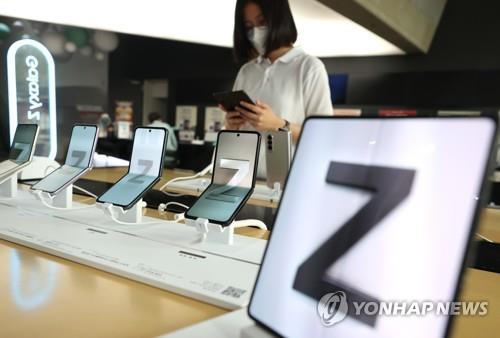Samsung may have spearheaded the foldable smartphone revolution with its Fold series devices, but the company is facing serious competition from rivals as the foldable phone market is on the cusp. to explode in the years to come. A recent report from IDC (International Data Corporation) predicts that the foldable smartphone market will show a healthy growth rate over the next three years. IDC’s predictions for foldable phones appear to come from the stellar shipment figures of foldable devices from 2020 to 2021.
This one-year period has seen foldable smartphone shipments reach just over 7.1 million units in 2021, up from a paltry 1.7 million units in 2020. This growth, according to IDC, has was largely fueled by the popularity of the Samsung Galaxy Z Flip 3, which in hindsight may be remembered as the first successful mainstream foldable smartphone. The IDC report goes on to predict that the foldable smartphone space will continue on a strong growth trajectory over the next three years, with shipments reaching 27.6 million units by 2025. This translates to a compound annual growth rate (CAGR) of 69.9% in the five-year period from 2020 to 2025.
More importantly, the 27.6 million units of foldable phones expected to ship in 2025 will have a total market value of $29 billion.
Another niche product in 2025?
Even though IDC’s figure of 27.6 million foldable phone shipments sounds impressive, it will only represent 1.8% of smartphone shipments in 2025, the year IDC expects manufacturers to ship more than 1.5 billion smartphones. There’s no denying, however, that this increase will primarily come from an increase in high-end smartphone buyers showing a willingness to ditch the traditional candy bar form factor and move to the newer foldable design (and more cool).
Interestingly, even in the foldable space there seems to be competition between the flip and fold form factors, and as of 2021 the flip form factor seems to be winning. Consumers seem to have taken a liking to the flip form factor made famous by the Galaxy Z Flip 3. And while the phone’s compact dimensions (when folded) attracted plenty of buyers, IDC attributes the shape’s significant sales numbers flip factor at its relatively affordable price of around $1,000. the The Galaxy Z Fold 3, on the other hand, continues to be out of reach for even the most ardent Samsung fans due to its nearly $2,000 price tag.
But given how quickly the foldable space is evolving, IDC thinks it’s still too early to pick a winner between these two form factors. Chances are that future improvements to the foldable form factor and a reduction in production costs will lead to a $1,000 Galaxy Z Fold 4 in the coming years. Then there’s the prospect of aggressive Chinese smartphone brands like Oppo, Xiaomi and Vivo cutting the cost of foldable phones across the board, eventually forcing Samsung to do the same for the Fold series as well.
A great opportunity for brands
One of the key takeaways from the IDC report is how manufacturers view the evolution of the foldable segment as a major growth opportunity. With smartphone sales plateauing in most developed economies – largely due to the lack of innovation in smartphone design for over a decade – the visual shift in smartphone design brought about by the arrival of foldables could revive consumer interest in smartphones.
The brands are also keen to gauge how the foldable form factor would appeal to buyers who wanted something that could double as a smartphone and tablet. IDC, however, believes that the number of such users continues to be low in number, but that hasn’t stopped smartphone brands from offering deals to appeal to business consumers who might find foldable phones a convenient replacement for the tablet.
Editors’ Recommendations



